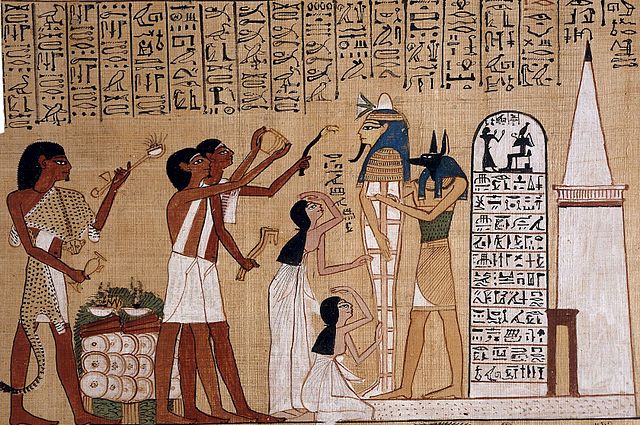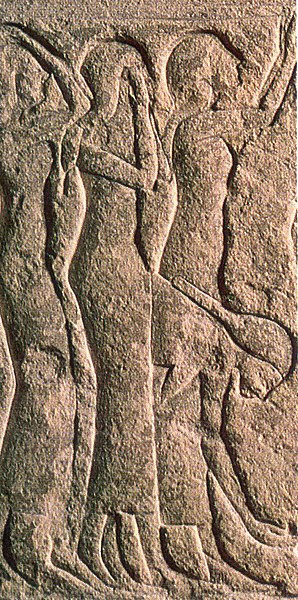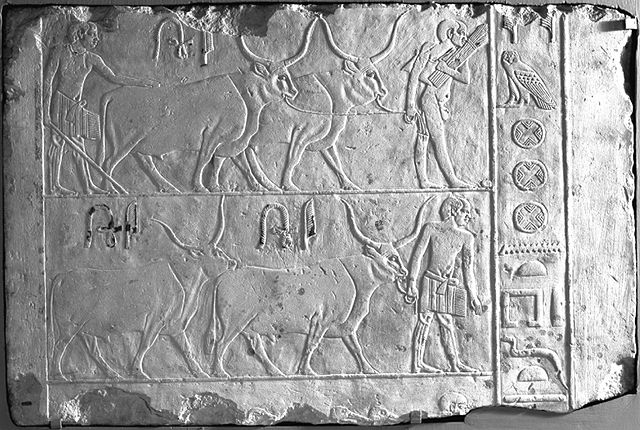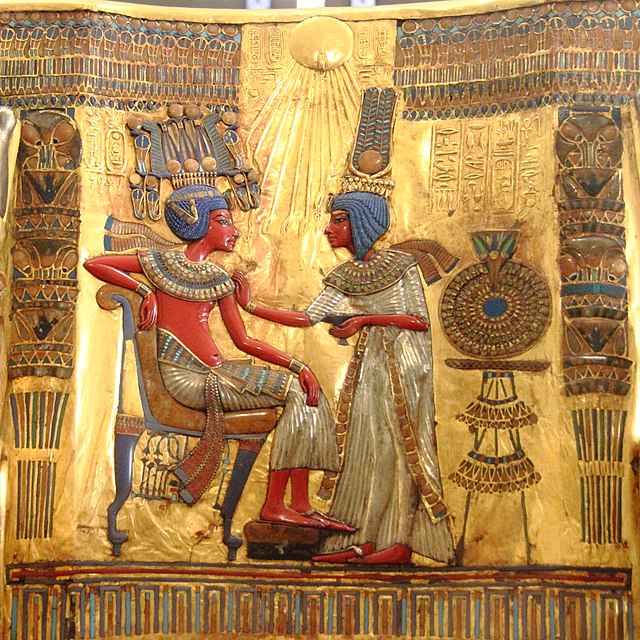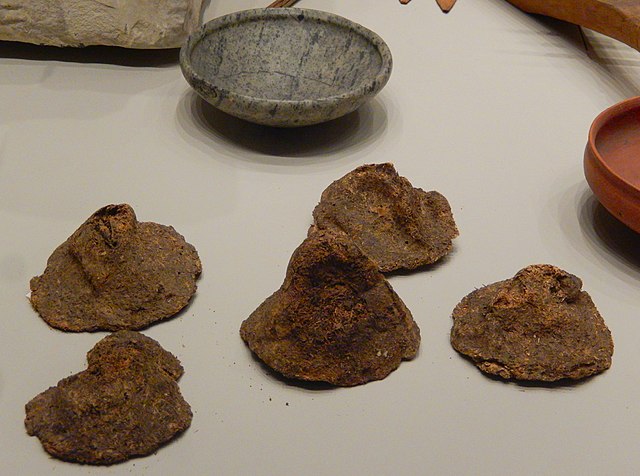Ancient Egyptian funerary practices
The ancient Egyptians had an elaborate set of funerary practices that they believed were necessary to ensure their immortality after death. These rituals included mummifying the body, casting magic spells, and burials with specific grave goods thought to be needed in the afterlife.
The Opening of the Mouth ceremony being performed on a mummy before the tomb. Extract from the Papyrus of Hunefer, a 19th-Dynasty Book of the Dead (c.1300 BCE)
Professional mourners in elegant gestures of mourning
Relief of Men Presenting Oxen, c. 2500–2350 BCE Limestone. In this relief, three men bring cattle to the tomb owner, "from the towns of the estate", as the inscription says. Two of these balding, rustic laborers wear kilts of coarse material and the other wears nothing at all. A fragmentary scene below shows men bringing cranes, which Egyptians penned and raised for food. Artisans carved images of live food animals in tombs to supply the deceased with an eternal source of provisions.
Mask from a coffin. Middle Kingdom (12th or 13th Dynasty, c. 19th century BCE). Cartonnage, 37.1387E, Brooklyn Museum
Grave goods, in archaeology and anthropology, are items buried along with a body.
The gilded throne of Pharaoh Tutankhamun is but one of the treasures found within his tomb.
Model of the warrior's burial 'Hamburg-Marmstorf Grave No. 216', dating to circa 50 A.D., Hamburg-Marmstorf, Hamburg, Germany. At the upper edge are turf and the plough horizon. Below are the burial in a ceramic urn and beneath that the grave goods.
Conical loaves of bread as grave goods exactly as laid out in the Great Tomb, North Necropolis, Gebelein, 5th Dynasty (Old Kingdom), 2435–2305 BC. Excavations by Ernesto Schiaparelli, 1911. Egyptian Museum, Turin, S. 14051–14055
A Copper Age grave group including a stone wristguard, copper dagger and bone belt fitting found at Sittingbourne

